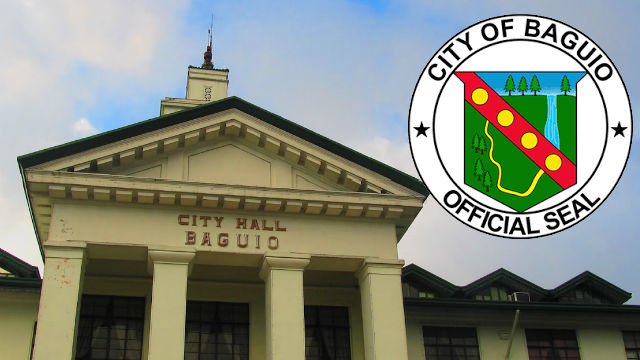TUBA, Benguet –An official of Philex Mining Corp. has told beneficiaries from the five outlying communities of Padcal mine to make good with their company-granted and -assisted livelihood projects, whose 2017 budget amounted to P9.5 million, before the 2022 mine life of its gold-and-copper operations in this province comes to a close.
“You must be prepared before the mine closure, where the SDMP phase-out follows,” AVP Roy Mangali, who is also Padcal resident manager, said in a speech Wednesday, Jan. 31, at the 2018 Livelihood Conference: A Review of What We are Today and What We Shall Become Tomorrow. “It might even be closer than we thought, so you make the most of our livelihood assistance.”
SDMP, or Social Development and Management Program, is one of the three pillars of Philex Mining’s corporate social responsibility (CSR), through which Padcal mine’s Community Relations (ComRel) Dept. implements the various social projects on health, education, livelihood, and public infrastructure in the host towns of Tuba and Itogon. The company also implements a media and public campaign Information, Education and Communications (IEC) on the benefits a society derives from the mining industry, and a program called Development of Mining Technology and Geosciences (DMTG), which funds trainings for mining personnel and R&D activities being undertaken by professionals to further improve the sector.
Held at the Hotel Supreme, in Baguio City, the conference was attended by about 64 farmers, housewives, and other residents belonging to 16 different livelihood associations from the host barangays of Camp 3, in Tuba, and Ampucao, in Itogon, as well as the neighboring barangays of Camp 1 and Ansagan (Tuba) and Dalupirip (Itogon). These five villages are collectively called outlying communities.
The speakers who took turns explaining to the attendees the roles of the different government agencies in guiding them toward becoming successful nonprofit enterprises included, among others, Remy Ortega, community-affairs officer II at the Mines and Geosciences Bureau (MGB), in Baguio City; Labor Employment Officer II Clarissa Lyca Vizcarra, of the Department of Labor and Employment’s regional office in the city; and Irene Goyo, revenue officer at the Bureau of Internal Revenue, also in Baguio City.
While Ortega explained what SDMP, IEC, and DMTG were all about, as mandated by the MGB, an agency under the Department of Environment and Natural Resources that regulates the mining industry, Vizcarra tackled the challenges being faced by the microscale industry and how to resolve such. For her part, Goyo talked about the fines and penal provisions involving reportorial requirements for livelihood associations, as well as taxation laws and their exemptions.
Philex Mining had granted seed capital to each of the 16 livelihood associations which they used to put up their nonstock, nonprofit enterprises, which range from hog raising and aquaculture to organic-vegetable farming and variety stores, among other projects.
Last November, for instance, the company started implementing aP1-million hog-raising project for the livelihood of 40 of the 67 households in a host village, and as part of its social program in relation to an exploration activity between 2014 and 2016 at the company’s Bumolo Prospect, in barangay Ampucao.
A total of P650,000 was set for release to 23 families in the barangay’s Sitio Sta. Fe by January, to cover the purchase of piglets, including their feeds and medicines for four to five months, through the village’s residents’ group called SQUALA, or Sta. Fe Quarry Livelihood Association. An initial budget of P350,000 was released to SQUALA, led by its president, Abel Magamba, last July, which covered the purchase of piglets, plus their feeds and medicines, for 17 families, according to Ferlyn Caslangan, ComRel’s area coordinator for special projects.
While the project was funded part of a social program being funded at 10 percent on top of Philex Mining’s P15 million worth of Exploration Work Program (EWP) between 2014 and 2016 within its MPSA, or Mineral Production Sharing Agreement, 156-2000-CAR, in barangay Ampucao, it also started installing last September a potable water system in the barangay’s Sitio Sta. Fe to the tune of P2 million, P1.5 million of which would be funded through the SDMP while another P500,000 would come from the Community Development Program (CDP).
MPSA is where the government shares in the production of the contractor (miner), whether in kind or in monetary value. The CDP, on the other hand, is through which socioeconomic and cultural projects are being implemented in areas where there are ongoing exploration activities, while projects involving SDMP are carried out where there is production or mining operation.
In its 2017 Annual SDMP report submitted to MGB, Philex Mining said SDMP’s budget for livelihood and enterprise development amounted to P5.56 million; the total funds reached P9,505,600, however, including the respective carryovers (unspent budget) of P2,674,800 and P1,270,800 from 2016 and 2015. Public infra got the biggest chunk of P53.48 million, or P93.16 million including the carryovers, while education got P15.73 million (P17.74 million), and health had P7.42 million (P8.72 million).
The SDMP allocation for every outlying community is 42.5 percent each for Brgys. Camp 3 and Ampucao, and 5 percent each for Brgys. Camp 1, Ansagan, and Dalupirip.
In its previous statements, Philex Mining said the SDMP budget for 2017 reached P82.19 million, bringing to P129.12 million the total funds including the 2016 and 2015 carryovers of P45.38 million and P1.55 million, respectively. The company had also set aside P16.6 million for IEC and P11 million for DMTG.
By HENT














A sobering thought that Philex will not be there forever. Regardless, their beneficiaries are always on their minds. These are the things to consider when contemplating whether mining taxes need to be increase. Mining is more than just minerals and contributions to national coffers. It nurtures whole communities.